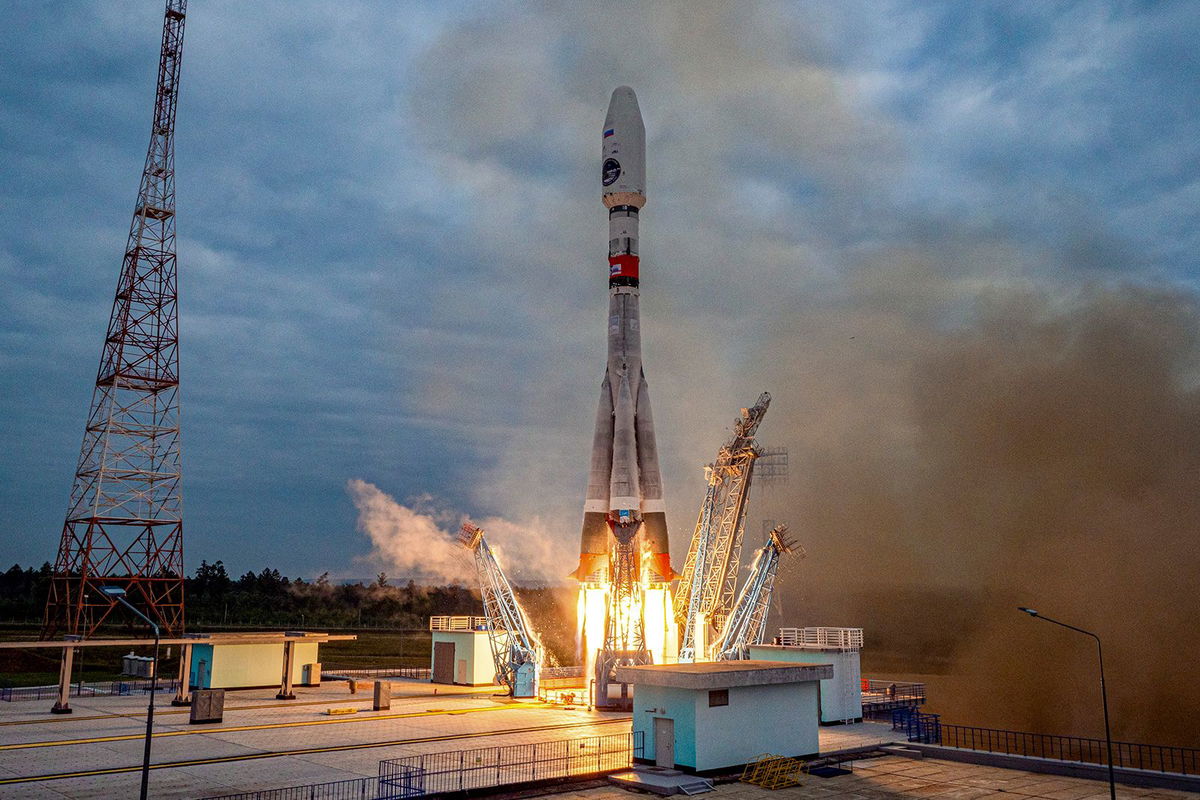Head of Russian space agency offers context on why spacecraft crashed into the moon

In this image made from video released by Roscosmos State Space Corporation
By Jackie Wattles and Mariya Knight, CNN
(CNN) — The loss of Luna 25, Russia’s first moon mission in decades, likely came down to engine failure, Yury Borisov, the head of Russian space agency Roscosmos, told state media on Monday.
“Before making adjustments, the spacecraft reoriented, and at 14:10 the engines were turned on, that were supposed to correct the course and lead the spacecraft to pre-landing orbit. Unfortunately, the engine shutdown did not occur normally in accordance with the cyclogram, but according to a temporary cutoff,” Borisov said in an interview that aired on the state station Russia-24, which was shared by Roscosmos.
“Instead of the planned 84 seconds, the engine worked for 127 seconds,” he added. “This was the main cause of the spacecraft’s crash.”
He added that the engine burn had been previously tested on ground simulators, according to the interview.
Roscosmos lost contact with the Luna 25 spacecraft on Saturday. The mission was declared dead by the following day.
“The entire experiment was carried out in the zone of stable radio communication,” Borisov said, indicating that contact was likely severed solely because the spacecraft crash-landed.
Roscosmos, through its Telegram channel, already revealed that Luna 25 was attempting to use its onboard thrusters to adjust its orbit before the loss of communication occurred.
The spacecraft was headed for the moon’s south pole region, where it was expected to land as soon as Monday. But attempts to regain contact with Luna 25 over the weekend were unsuccessful, leading Roscosmos to conclude it crash-landed.
A special commission will investigate the reasons for the loss of Luna 25, the Russian space agency said.
Borisov said the interruption of the lunar program for almost 50 years also played a part in the crash.
“We have to essentially master all the technologies all over again — of course, at a new technical level,” he said.
A report from Russia’s state-owned news agency, TASS, also revealed that the country now plans to expedite its plans for additional Luna missions, including Luna 26 and Luna 27.
Putting the setback in perspective
Luna 25 was expected to mark a massive milestone for Russia’s civil space program. The country has not landed a spacecraft on the moon since the Soviet era.
The last Luna mission, Luna 24, landed on the moon on August 18, 1976.
The moon’s south pole is an area of widespread interest in the global space community because it remains largely unexplored. The region is also believed to be home to stores of water ice, which could be a valuable resource for future deep-space missions, according to scientists. Water ice could provide rocket fuel and even drinking water for astronauts.
Russia’s Luna 25 was expected to land closer to the moon’s south pole than any mission in history. India’s lunar lander Chandrayaan-3 remains in the running to achieve this milestone. The spacecraft is aiming to attempt its landing as soon as Wednesday.
The area is difficult to reach because of the orbital mechanics involved.
The-CNN-Wire
™ & © 2023 Cable News Network, Inc., a Warner Bros. Discovery Company. All rights reserved.